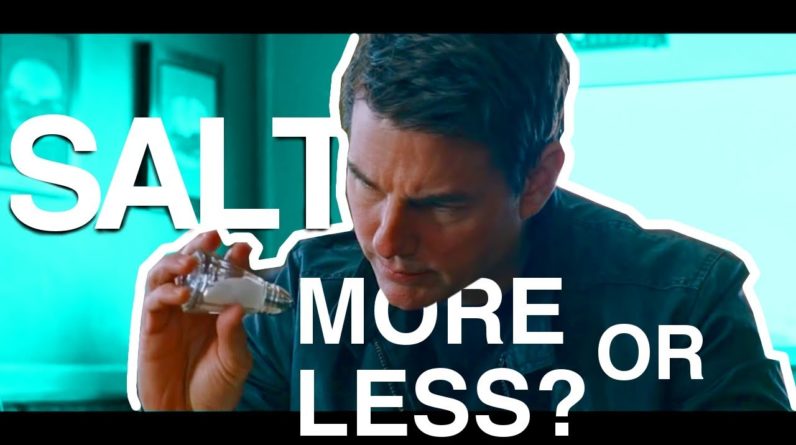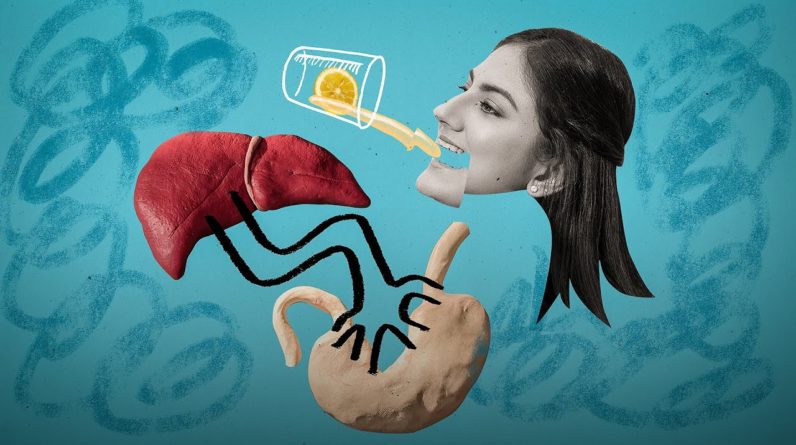
Salt. It doesn’t get much attention lately as
the most that is said about it is usually just to eat less of it. But is that always the best advice? A March 1940 paper by Lawson Wilkins in Baltimore
describes the case of a child who, starting from 11-months of age, had a very unusual
craving for salt. In a letter responding to questions regarding
their child's special appetite, the parents explained how the child would throw up almost
everything except for mother’s milk; at the advice of a doctor, the parents tried
giving the child crackers. He threw those up too… but soon he started
just licking all the salt off the crackers and then would ask for more. Once the boy figured out what was in the salt
shaker, the mother said he refused to eat anything unless the salt shaker was also on
the table. He ate plain salt by dipping his finger into
it and bringing it to his mouth. It was estimated that the child was eating
an extra teaspoon of plain table salt a day in addition to his foods already being saltier
than his parents’.
Based on weight, the adult equivalent of that
would be about 20 to 30 extra grams of salt per day. American dietary guidelines by the way, advise
people to limit their daily salt intake to a maximum of only 5.75 grams. Later it was found out that this massive craving
for salt wasn’t just a quirk of the palate, the child’s body was urging him to get what
it needed. He was admitted to the hospital at age 3 and
unfortunately after only 7 days on the hospital’s low salt diet, he suddenly died.
The final paragraph of this paper says “A
boy aged 3 1/2 years with deficient adrenal cortical tissue, manifesting various symptoms
of adrenal insufficiency, had a marked craving for salt. …it would seem that this boy, by increasing
his salt intake kept himself alive for at least two and one half years." As this case illustrates, we can’t live
without enough salt, but of course healthy people can survive on far less than what this
child needed. In 2005, the US federal government’s dietary
guidelines set a maximum limit for sodium at 2,300 milligrams, or about 5.75 grams of
salt per day – this is about as much sodium as is much is in just one and a half large
dill pickles.
It was estimated that reducing Americans intake
of salt by half a teaspoon a day (about 2.8 grams) would prevent 92,000 heart attacks
and save the country $20 billion in health care related costs. Their logic behind this is relatively straightforward:
“In large amounts, sodium pulls fluid from the body’s tissues and into the blood which
raises the blood volume and the heart pumps harder.
The result: high blood pressure. Chronic high blood pressure stresses the heart
and arteries leading to heart disease. So, less salt should mean less disease. Now, Hypertension is currently at an all time
high – 1 in 3 Americans have it. But is salt to blame? Dietary salt intake used to be far higher
than it is now, mainly out of necessity. Before the industrial era, salt was the most
common and effective food preservative. As Mark Kurlansky points out in “Salt: A
World History,” we know that the salt intake in Europe was very high at least from the
1500’s when it was as much as 40 to 100 grams, thanks to foods like salted fish. This amount would be like consuming the entire
contents of one to two two-ounce salt shakers like you’d see in a diner. If these massive quantities of salt were causing
hypertension induced heart disease, then people at the time must not have cared much about
…sudden death..
Considering the first report of heart disease didn’t occur until the
mid 1600s. Then, from the early 1800's until the end
of World War 2, western societies consumed between 15 and 17 grams of salt per day – Based
on military archives' data. “After World War II, when refrigeration
began to displace salt as the main means of food preservation, salt consumption in the
U.S. dropped dramatically to about half that rate, or nine grams (1.8 teaspoons) per day
and, based on twenty-four hour urinary sodium data, has remained flat for the last fifty
years.” So, despite this historically low and steady
salt intake, prevalence of hypertension is now three times as high as it was in the first
half of the 1900s. So, salt intake is “still” high according
to health guidelines, but this doesn’t explain how hypertension keeps going up while salt
consumption stays steady.
The South Koreans eat a wide variety of salty
foods with the easiest example being kimchi- cabbage and other vegetables preserved in
salt and spices. Kimchi is eaten at literally every meal. The average South Korean consumes around 4000mg
of sodium per day, almost twice as much as the US dietary guidelines recommend. Despite this, South Korea has the lowest rates
of coronary heart disease in the world, according to 2014 data from the World Health Organization. In fact, the data from a September 2015 paper
funded by the Korea Food Research Institute shows that the quartile groups that consumed
the most sodium had the lowest rates of hypertension, coronary heart disease and stroke. This has been dubbed “The Korean Paradox.” And, as Dr. James DiNicolantonio points out:
“you could swap out Korea for any one of thirteen other countries and get a lot more
“paradoxes” regarding high salt intakes.” In his very thorough book “The Salt Fix,”
Dr. DiNicolantonio makes the case that reducing salt intake is not only unnecessary but potentially
harmful to health.
Salt has several very important functions:
It’s needed by the heart to pump blood properly, it’s needed by the stomach to facilitate
digestion, and it is necessary for bone formation and bone strength. It’s a key component in cell-to-cell communication
and the optimal transmission of nerve impulses to and from organs like the heart and brain. As is explained in The Washington Manual’s
Endocrinology Subspecialty Consult, at particularly low sodium levels, “patients may present
with neuropsychiatric signs and symptoms, ranging from muscular weakness, headache,
lethargy, ataxia and psychosis to cerebral edema, increased intracranial pressure (ICP),
seizures, and coma.” On the other side of the spectrum, consuming
particularly large quantities of salt can of course have terrible consequences.
According to a 1913 article, "in the Chekiang
province, and probably in other provinces of China, the drinking of a saturated solution
of salt [was] a common mode of committing suicide.” People would down an entire pint to pint and
a half of saturated salt solution- they usually drank the brine used for pickling cabbage. But for it to kill someone, all this salt
had to be consumed very quickly in order to overcome the powerful filtration ability of
the kidneys. This is why 16th century Europeans could consume
so much salt- while 100 grams of salt is a massive amount, it can be simply processed
by the kidneys if ingested at a normal pace. So, if humans had to consciously restrict
their salt intake in order to stay healthy, this would suggest that our regulating systems
like the kidneys aren’t very powerful at all, but our history suggests otherwise.

In order for our cells to work properly, systems
had to develop that could regulate the concentration of salt and other components of our blood
and extracellular fluid. The kidneys of course are very important in
this respect. Considering cells can’t survive outside
a narrow range of electrolyte levels in the extracellular fluid, the ability to retain
salt and at the same time excrete excess salt is very important.
Mammals who get their food from the sea such
as the sea lion, sea otter, walrus, and polar bear, ingest large amounts of salt. But The salt content of their blood is not
very different from that of terrestrial mammals. From our perspective at least, these animals’
“kidneys must be able to excrete massive quantities of salt.” But, the basic physiology of the kidneys is
the same in humans. Through the process of osmoregulation, the
water and sodium levels in our body are constantly balancing each other out. If the blood sodium levels drop too low, water
from the blood will enter our tissues to maintain this balance. When there’s an increase in sodium in the
blood, the kidneys simply excrete the excess into our urine. As is explained in the book the Salt Fix:
"If our blood and fluid levels of sodium get high, we start reabsorbing less salt from
the kidneys and absorb less salt from the foods we eat–the liver can signal the intestine
to reduce sodium absorption.
And If sodium begins to accumulate, our bodies
also tend to harmlessly shunt excess sodium to the skin or organs." In fact, a 1979 paper authored by Friedrich
Luft and colleagues, described an experiment where they gave people with normal blood pressure
various amounts of sodium, going as high as around 87 grams of salt. They found that “The urinary sodium excretion
approached the total sodium intake at each level.” Their bodies were simply excreting these excess
loads of salt, to the point that they were able to excrete ten times a normal sodium
intake, up to 86 grams of salt per day. Dr. DiNicolantonio points out that these kinds
of capabilities “suggest that the human body is well adapted to handle salt overload-but
not salt deficit.” So, If it’s easier for the body to handle
excess salt rather than insufficient salt, we should expect to have data showing higher
rates of mortality from lower salt intake.
Well, this data is available. A 2014 article in The New England Journal
of Medicine analyzed the Mortality and Cardiovascular Event rates of 102,000 people assessed for
urinary sodium and then followed them for 3.7 years. The article concluded that “An estimated
sodium intake between 3 grams and 6 grams per day was associated with a lower risk of
death and cardiovascular events…” But, what’s important is that the adverse
effects to health increase much more rapidly when you are under this range rather than
above it. As you go over 6 grams of sodium, about 15
grams of salt, the health risk does start to rise but it rises much more gradually. Based on the data here, eating six times as
much salt as is recommended by the US dietary guidelines would pose less of a risk to your
health than actually following the guidelines. Animals have a very strong innate drive to
acquire salt specifically- just like they would go to great lengths to acquire water
or food when thirsty or hungry. Elephants will uproot entire trees to get
at the salty soil under the roots, gorillas will chew on rotting wood to eat the salty
microbes and some animals will drink urine due to its sodium content.
But these efforts pale in comparison to what
humans have done for salt. Mark Kurlansky’s book Salt: A World History
is a 449 page testament to this. As he shows, Salt-seeking drove civilization,
built empires and won wars. Romans established every major city near a
saltworks and for some time roman troops were paid in salt; Britain lost control of its
American and Indian colonies when it lost control of their salt supplies. Kurlansky states, “The history of the Americas
is one of constant warfare over salt. Whoever controlled salt was in power.” When salt is freely accessible, people across
many populations tend to consistently consume between 3000 and 4000 milligrams of sodium
per day.
In America, the country infamous for reckless
eating habits, from 2011 to 2012 the average daily sodium intake was only 3600 milligrams. This suggests that the body will push people
to acquire salt, but in accordance with their actual needs for the mineral. In a 1936 paper titled “Experimental sodium
chloride deficiency in man,” through 7 days of sweating and sodium-free diets, subjects
became sodium deficient. “The participants reported that they experienced
extreme, unquenchable thirst. One participant reported that he experienced
a longing for salt and often went to sleep thinking about it. …With regard to mood-related symptoms, subjects
reported a loss of appetite, anhedonia, difficulty concentrating, excessive fatigue, and a general
sense of exhaustion.” A 1995 study at Johns Hopkins University School
of Medicine was done on a group of Chronic Fatigue Syndrome patients. Patients were encouraged not to restrict sodium
intake and were given the drug fludrocortisone, which causes the body to retain sodium.
76% of the patients ”reported a favorable
response to [this] therapy by manifesting reduced CFS symptoms and improved clinical
signs…” Especially noteworthy was the observation
that the patients also improved scores on a test of general well-being that likely reflected
improved mood. at the conclusion of the study, it was learned
that 61% of the Chronic Fatigue Syndrome patients had voluntarily imposed low sodium diets upon
themselves. As the 17th century Chinese scientist and
encyclopedist Song Yingxing said: “[there are] in the world five tastes… A man would not be unwell if he abstained
for an entire year from either the sweet or sour or bitter or hot; but deprive him of
salt for a fortnight, and he will be too weak to tie up a chicken…” Craving for salty foods is surely not indicative
of salt being “addictive”, but just shows that the body has an impressive ability to
drive you to consume what it needs.
A 1928 study in the American Journal of Diseases
of Children found that When very young normal children were given free access to a variety
of natural foods to choose by themselves, they selected foods that facilitated normal
growth and development. There was even one child with Rickets caused
by vitamin deficiency that continued to take large amounts of straight cod liver oil over
a period of 101 days. After the deficiency symptoms disappeared,
so did his craving for cod liver oil. The reason humans in general are hovering
around an intake of 3 to 4 grams of sodium per day, despite the world health organization
and US government urging them to cut their salt intake down to lower than 2.3 grams a
day, is probably because their bodies are pushing them to acquire the amount that is
best for them.
As mentioned earlier, a sodium intake of 3
to 6 grams (about 7 to 15 grams of salt) seems to be an ideal range for most people. However, if you are losing more salt from
sweating alot or being on a low carbohydrate diet, this range may be shifted upwards to
say 4 to 7 or 5 to 8 grams of sodium or more. Now, there’s still a several points about
specifically why lowering salt intake stresses the body, contrary to conventional health
advice. So stick around, I’ll be covering the science
behind this another time..







